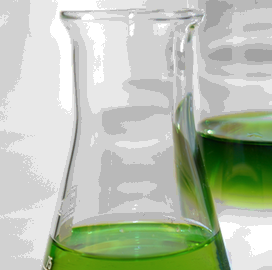Ammonia process enhanced
 A new method of producing ammonia could greatly reduce carbon emissions in agriculture and clean energy transport.
A new method of producing ammonia could greatly reduce carbon emissions in agriculture and clean energy transport.
Ammonia is a key ingredient in fertilisers and is also used to safely transport hydrogen for clean energy.
Currently, the traditional process for making ammonia, known as the Haber-Bosch process, consumes more than 2 per cent of the world's energy and produces up to 2 per cent of global carbon emissions - about twice Australia’s annual emissions.
Local researchers have now developed a new method that uses 20 per cent less heat and 98 per cent less pressure compared to the Haber-Bosch process.
This new approach relies on liquid metal catalysts - specifically, copper and gallium - to break down nitrogen and hydrogen into ammonia.
“The copper and gallium we use is also much cheaper and more abundant than the precious metal ruthenium used as a catalyst in current approaches,” says RMIT Research Fellow and study lead author, Dr Karma Zuraiqi.
This development could make ammonia production more affordable and environmentally friendly.
Liquid metal catalysts offer a more dynamic way to move chemical elements, speeding up the reaction process.
The new technique uses tiny droplets of liquid metal, called ‘nano planets,’ to break apart nitrogen and hydrogen more efficiently.
Although copper and gallium had been dismissed as ineffective catalysts for ammonia production in the past, their combination has proven to be highly effective.
This low-energy method could revolutionise the way ammonia is produced.
Traditional ammonia plants are large and centralised, but this new approach could be used in smaller settings, like solar farms.
This would lower costs and emissions tied to transport, as ammonia could be produced closer to where it is needed.
RMIT and Queensland University of Technology (QUT) are co-owners of this technology, and they are now focusing on scaling up the process for industrial use.
“We are really excited by the results and are keen to speak with potential partners interested in scaling this up for their industry,” said Dr Zuraiqi.
In addition to agriculture, this technology could play an important role in the hydrogen industry.
Ammonia is a promising solution for transporting hydrogen safely, and this new production method could help cut emissions in hydrogen transport.
“Our vision is to combine our green ammonia production technology with hydrogen technologies allowing green energy to be shipped safely around the world,” said RMIT’s Professor Torben Daeneke.








 Print
Print